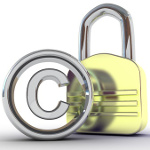 A federal judge has found that Public.Resource.Org infringed upon the copyright of educational standards developed by the American Educational Research Association (AERA), the American Psychological Association (APA) and the National Council on Measurement in Education (NCME).
A federal judge has found that Public.Resource.Org infringed upon the copyright of educational standards developed by the American Educational Research Association (AERA), the American Psychological Association (APA) and the National Council on Measurement in Education (NCME).
Judge Tanya S. Chutkan of the U.S. District Court for the District of Columbia found that standards developed by the three organizations retained their copyright even when incorporated by reference into government regulation, and ruled that Public Resource is liable for copyright infringement, according to a release from Quarles & Brady LLP, the firm representing the agencies in the litigation.
The release continues:
Since the early 1950s, a volunteer committee of experts chosen, sponsored and overseen by the AERA, APA and NCME, have developed and published the Standards for Educational and Psychological Testing. The result of enormous deliberation, vetting and authoritative consensus, these standards represent a set of best practices in the development, administration and scoring of tests that are widely relied upon by educational and psychological testing professions across the country. In mid-2012, however, after the standards were incorporated by reference into state and federal education agency regulations, Public Resource posted an unauthorized copy of the entire 1999 edition to the Internet, taking the position that the standards had become law and therefore lost their copyright protection. When Public Resource refused to remove the copy, AERA, APA and NCME brought suit for copyright infringement. With the court’s ruling, the creative efforts, time, and resources expended by voluntary standards development organizations like AERA, APA and NCME are secured from unauthorized replication by copyright protection, regardless of whether state or federal agencies choose to incorporate the resulting standards by reference into agency regulations.
“We are gratified that the court protected the standards, a valuable resource of the testing professions, from the brazen actions of a deliberate copyist,” said AERA Executive Director Felice Levine.
In the view of APA Interim CEO Cynthia D. Belar, PhD, “protracted litigation was not our first choice, as nonprofit organizations focused on the contributions of our disciplines to the public welfare. Public Resource’s refusal to stop harming the value of our publication left us with no alternative.”
NCME President Mark Wilson said that “the testing professions rely on the standards as the premier source of guidance for the work we do. We appreciate that the court saw the value in protecting the standards from infringement.”
About AERA, APA, and NCME
AERA is the major national scientific society for research on education and learning. AERA’s mission is to advance knowledge about education, to encourage scholarly inquiry related to education, and to promote the use of research to improve education and serve the public good.
APA is the largest scientific and professional organization representing psychology in the United States. APA’s membership includes nearly 115,700 researchers, educators, clinicians, consultants and students. Through its divisions in 54 subfields of psychology and affiliations with 60 state, territorial and Canadian provincial associations, APA works to advance the creation, communication and application of psychological knowledge to benefit society and improve people’s lives.
NCME is a professional organization for individuals involved in assessment, evaluation, testing and other aspects of educational measurement. NCME’s members are involved in the construction and use of standardized tests; new forms of assessment, including performance-based assessment; program design; and program evaluation. NCME’s members include university faculty; test developers; state and federal testing and research directors; professional evaluators; testing specialists in business, industry, education, community programs, and other professions; licensure, certification, and credentialing professionals; graduate students from educational, psychological, and other measurement programs; and others involved in testing issues and practices.
AERA. APA and NCME were represented in the litigation by Jonathan Hudis, Nikia Gray and Jonathan Labukas of the Washington, D.C. office of Quarles & Brady LLP. For more than 120 years, Quarles & Brady has provided quality legal services to a wide range of industries on a national stage. The firm is a multidisciplinary AmLaw 200 legal services provider with 10 offices across the United States.
Join Our LinkedIn Group

 Lex Machina has published an
Lex Machina has published an